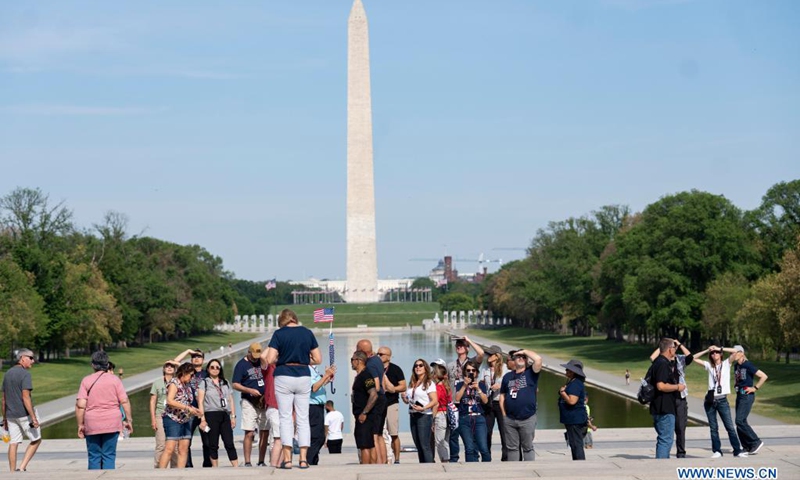Vindication of Conspiranoia
(Spain) on 30 May 2021
by Javier Sierra (link to original)
The first time I heard the word “conspiranoiac” was from the mouth of Enrique de Vicente* at the end of the 1980s. At that time, stories were bubbling up about crashed UFOs in Area 51, and rumors were starting to circulate that the United States government had signed a treaty of cooperation with an extraterrestrial civilization. The crashed UFOs — according to “well-informed sources” — were facilitating access by the aliens to U.S. citizens for genetic experimentation in exchange for technology for the country’s weapons programs. de Vicente was writing for the magazine Muy Interesante (Very Interesting) at the time, and we would often discuss all this craziness. This was still a decade before “The X-Files” burst onto the small screen. He suspected that these stories were paranoia fed by intelligence services. Probably, he said, they had been designed in a “social laboratory” to divert attention from more human experiments — perhaps with plutonium, as in the Cold War, perhaps with another type. In short, it was a conspiracy. And he coined a term that made him a fortune.
Conspiranoia thus became a common resource of the ufologists of the '80s. There was no conference, debate or radio program in which Roswell was discussed, or secret documents about mummified Martians, where he did not fly the flag of conspiranoia. At one time, its use was reduced to that environment, but immediately de Vicente himself — through the pages of the magazine Año Cero (Year Zero), which he funded and directed for a quarter-century — applied it to historic intrigues like the assassination of JFK, the “non-death” of Elvis and the 9/11 attacks. It was a perfect word for distancing himself. He was defining an idea at the same time as he was debunking it. And so, soon, his ingenious neologism began to be heard in more generalist conversations.
The conspiranoiacs are living in their Golden Age just now. Last year when Donald Trump, at the beginning of the pandemic, argued that the COVID-19 virus had escaped from the Wuhan Institute of Virology, a maximum biosecurity level laboratory specializing in coronaviruses, the press crucified him with the unfortunate term. Commentators and experts made fun of him. They did the same to Luc Montagnier, who won the Nobel Prize in medicine for the discovery of HIV, when he also pointed to the Wuhan Institute. Or on television programs like “Cuarto Milenio” ("Fourth Millennium") — on which, by the way, de Vicente is often seen — when they explained that hypothesis better than any other news outlet. Conspiranoia was the implacable diagnosis applied to those heretics. What was — and still is — politically correct was to accept the hypothesis that the virus incubated in a wild animal and jumped to humans in a casual way, although we do not even know what animal we are talking about, nor when nor how that transfer took place. The well-informed citizen, then, should accept what the World Health Organization said last February at the end of its investigation in Wuhan, and conclude that the probability that COVID-19 escaped from a laboratory was “extremely unlikely.”
But the conspiranoiacs have never given up and they now cite their reasons with more assurance than ever. For example, they cling to the fact that the Chinese authorities gave the WHO access to their virology labs for only three hours! They were not permitted to access databases that had not been processed in advance by the regime, and something that was previously hidden was revealed by The Wall Street Journal on May 23: In October 2019, weeks before the “official” detection of the first case of the virus, three investigators from that laboratory had fallen ill from a mysterious pneumonia.
On May 13, 18 scientists from Harvard, Stanford and Yale sent a letter to the journal Science asking that the viral leak hypothesis be reviewed. Even Anthony Fauci, director of the U.S. National Institute of Allergy and Infectious Diseases, the target of Trump’s outbursts, acknowledged that it is not clear that the origin of the virus is completely natural. And to this we add the umpteenth intervention by the Jinping regime to block a Wall Street Journal reporter’s access to a copper mine in the southeast of the country where — in April of 2012! — six workers who were removing bat guano from the mine became infected with a disease similar to COVID-19, which killed three of them. Interestingly enough, the Wuhan laboratory was responsible for taking samples of this pathogen. In essence, everything related to the origin of this virus, and to that research institute, is a state secret in China, clearly. The question is, why?
President Joe Biden just drove the final nail in the coffin of this climate of distrust. He has given his intelligence services 90 days to determine what happened in Wuhan when it all came to a head. It is no longer taboo to speak of the “viral leak.” Everyone must have noticed that if, as his predecessor has stated, we could be faced with monumental negligence in public health, or perhaps even faced with an engineered virus, the consequence would be a demand for criminal and financial penalties for the planet’s second-biggest gross domestic product. And that could take us far away from what anyone is imagining now.
Call me a conspiranoiac — fortunately, de Vicente knows that I am not — but things are looking worse all the time. It is no longer paranoia. It is no longer conspiracy. Mistrusting everything and everyone is just common sense.
*Translator's Note: Enrique de Vicente (b. 1950) is a Spanish sociologist, journalist and writer.

/cdn.vox-cdn.com/uploads/chorus_image/image/61068677/GettyImages-160759694.0.jpg)
